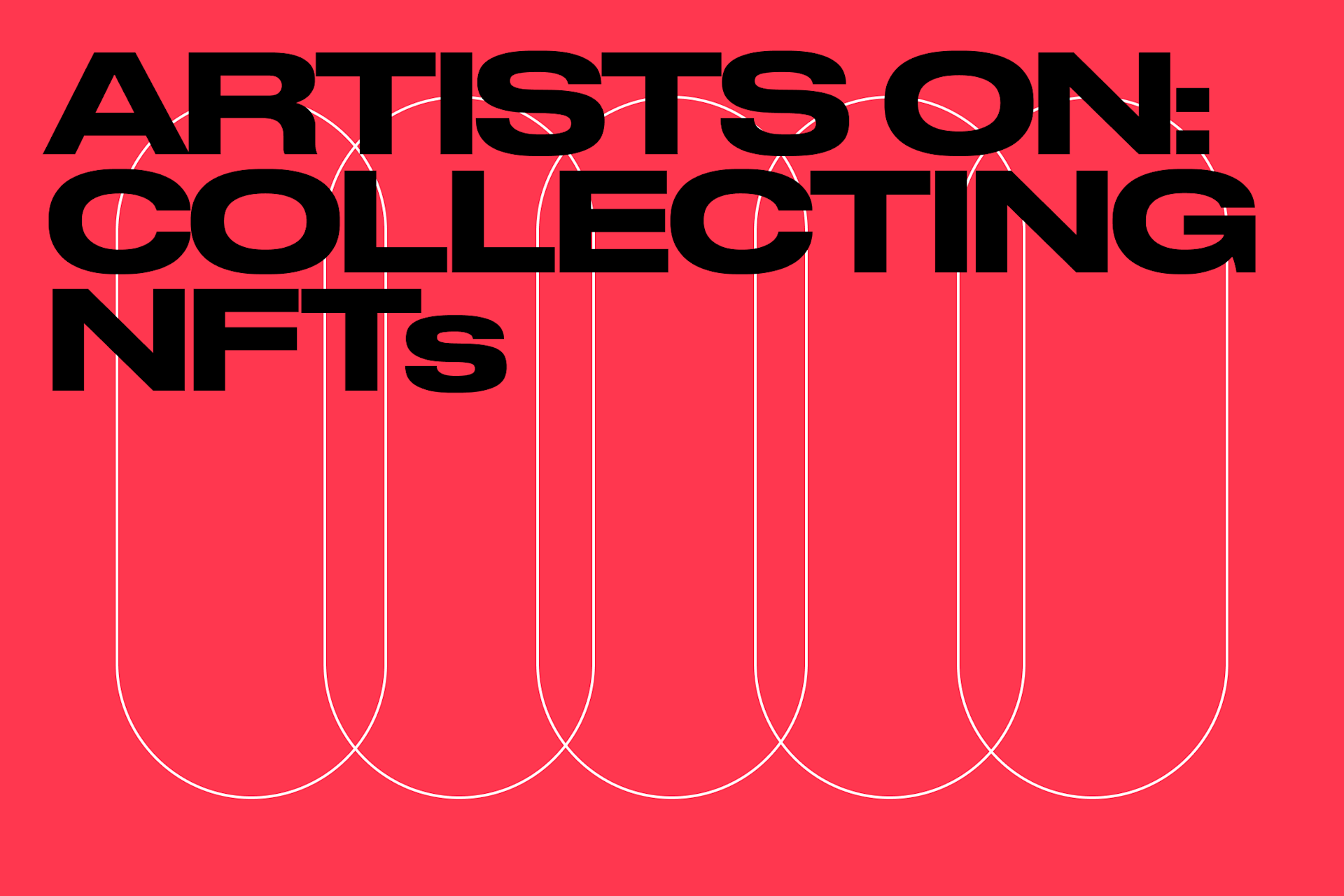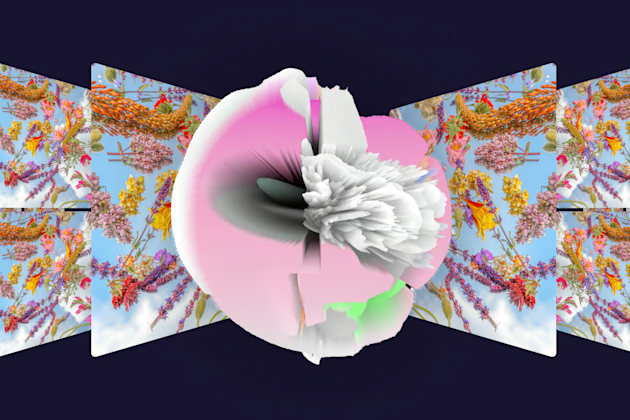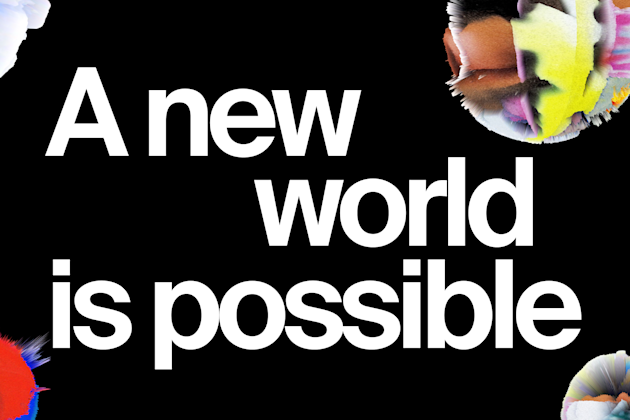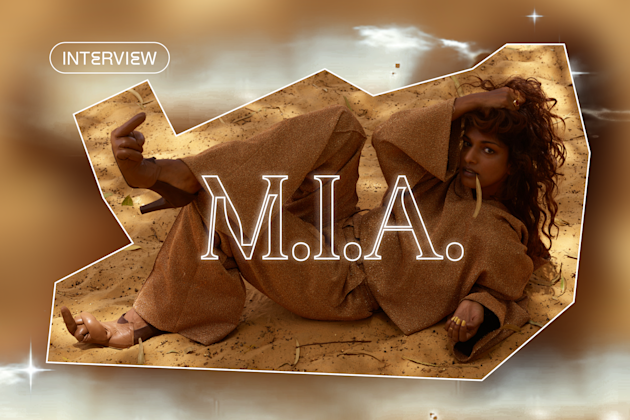Why artists are collecting each other’s NFTs.

If you want to see into the future, just watch what artists are getting up to. They’re often the first to push the limits of new technologies, and their involvement can be a strong indicator that an innovation is about to go from niche to mainstream. As one example, the recent explosion of interest in NFTs is in no small part due to a surge of new creators entering the crypto space. And, interestingly enough, creators aren’t just minting tokens for others to collect—they’re also collecting NFTs themselves.
So why are so many crypto-enthused artists collecting NFTs by other crypto-enthused artists? To investigate this, we spoke with five creators—Sean Williams, Blake Kathryn, Sarah Zucker, Jon Gold, and Justin Oulette—about their NFT collections, why they’re motivated to create and collect, and their future plans for building out their collections.
What does it mean for you to be an artist who collects NFTs?
Sean: As a collector who’s also an artist, it’s natural to me to champion other artists. Because of this, I want to build my collection mindfully, in ways where we can all grow financially, and where it becomes a net good for all of us.
It’s also important to me to reinvest in the community that is taking care of me. I've only been in the crypto space since October, but since getting involved, I've been able to quit my job and focus more on my art. That wouldn’t have happened as quickly without the crypto community embracing my art. As someone who’s already benefited from the support of the space, I want to further that by supporting other artists, so we can build a space that is supportive of everyone.
Sarah: I chose a life in the arts and it’s everything to me. It’s what I live for. But we often have to fight to preserve the Arts in a society that tends to undervalue them.
My own success in the crypto art space has afforded me the opportunity to support artists whose work lights me up, which has been just as exciting as advancing my own art practice.
There can be an incredible symbiotic relationship between artists and collectors, and there’s no better way to foster these connections than to know both roles. There’s so much groundbreaking work being created right now (comparisons to the Florentine Renaissance are not uncommon), and it’s a privilege and an honor to play patron to the voices you want to see elevated in the world.
It’s not charity, and it’s not entirely selfless. Being an artist who collects means paying back into the system that’s sustaining you, and holistically bolstering its legitimacy. And, of course, you’re collecting digital assets that stand to accrue value. It’s a win-win all around.
Jon: I want people to experience what I feel when I collect another artist’s work, which is a feeling of interdependence, optimism, and hope. When we participate equally in this system and use our resources to help each other out, we create a mutually beneficial society. This is the headspace that I wish for us to exist in for the rest of our lives, and having these two-way participatory economies will help us get there.
Why do you think artists are becoming collectors in the crypto space?
Justin: Artists are often the first ones to see the value in new kinds of art. They don't need to be convinced. Collectors with a financial motive are going to be the first to get involved, but that's just temporary until the mainstream audience gets drawn in. Right now, I believe most people are underestimating how many people are going to understand the potential of NFTs easily and come in to keep the space growing. Specifically, I’m thinking about how natural this will feel for younger generations who have grown up completely on the internet. This is only the beginning.
How do you make decisions about what to add to your collection?
Blake: When I collect, I’m looking for pieces with a certain level of craftsmanship and uniqueness. I've been in the digital art scene for a long time, and I know when an idea is overused. I'm not drawn to those pieces. Not that there's any problem with them necessarily, they just don't impact me as emotionally.
So when I find a piece that speaks to me, or when I’m able to draw new concepts from it, that’s important to me.
Sarah: I have a strong sense of what I like, and I know instantly when something is for me. I’m drawn to psychedelic and visionary artwork, colorful outsider art, and anything with a great sense of humor.
There’s this notion in the Art Market that people buy themselves: meaning, we’re motivated to purchase that which we feel reflects us and our identities.
I’m personally not interested in short-term flipping and am more interested in the long-term impact of the space. I go with my gut and bid on work that I would feel proud to own, regardless of the artist’s stats or potential resale. I think of collecting from an artist as a public endorsement of their work, and I do my best to promote the artists I collect.
Jon: I see it as community-driven collecting. During the Foundation launch, I realized that we were witnessing friendships and community being built in real-time. I've been feeling that if what we're building on the Ethereum blockchain and Web3 is permanent, then what we’re doing right now—and the memories we’re making—are really important.
I've been looking back on the past 10-15 years of internet friendships and culture and realizing how little we have to show for it. By and large, I don't have that many reminders of my internet friendships. The primary way that I would like to collect NFTs is to support the people who have been supporting me during this time. I want to be able to remember this for the rest of my life. Collecting for me is about dipping into permanence and having these time capsules of my friendships.
Do you have ideas for how you might eventually showcase your collection?
Blake: I'd love to get a little slice of digital real estate to build a gallery on. I love building architectural elements so it'd be so fun to create.
I’d want to collaborate with some super smart devs to build a place to be able to showcase work from folks I've collected, and maybe to do a little self-promo too. That would be an extremely exciting project, and it's definitely one I'd like to work on in the future when the time is right.
Sean: I’d love to have a Cryptovoxels parcel where I could build a giant WEIRDWILDWORLD gallery. Then I’d be able to say, "These are the artists who I championed. These are the artists whose work I value. Here's a space where you can go and see their work." As an artist myself, I think it'll be cool to start building spaces in the metaverse where I can think about new ways to showcase artwork—whether it's my own or a collection of work that I have from other artists who I care about.
From your perspective, what’s the vibe of the crypto artist community?
Justin: At least in my own little corner, it’s very supportive. One of the reasons I like Foundation and other communities that are popping up is because they each have their own vibe, their own way of thinking, and their own sense of direction. You can tell that there's been a lot of pent-up demand for this kind of community and this network to form.
Sean: More than anything, the crypto community has been welcoming. I feel like this is the first time we've had an ecosystem that is not only working for crypto, but can now add art and artists into the mix. The community is so much more tangible now.
There are a lot of changes happening and I think that the artists who are going to have the most impact in the long-run are the ones who are banding together to find a way to keep this ecosystem growing. Nobody knows where we'll be in five months, and because of that, it’s really important to think about how we can work together to grow this community sustainably.
Blake: At the moment, it's really positive from my angle. I don't see competition and I think that's because when everyone is able to have a better quality of life, improve themselves, and see others do the same, it pushes the artist's realm to evolve. Starving artists don't necessarily create the best work. It's much better to be well-fed, have a comfortable life, and pay rent.
Maybe this is also pandemic vibes, but crypto art has created a hyper-social community. I can be on Twitter and jump into threads about art or I can join a room in Clubhouse and chat for a bit. It’s bringing out a lot more personality and connection in general.
Jon: My high-level answer is that it feels so good. It feels like we're creating a culture where we can all win, where it's not a zero-sum game, and where we don't have to be fighting with each other. Not feeling the need to promote your own work, and instead, wanting to hype up the work of other artists feels different. Everyone is just excited to see everyone else succeeding, maybe even before seeing that success for themselves.
Read more

Worldbuilders, say hello to Editions

A new world is possible
